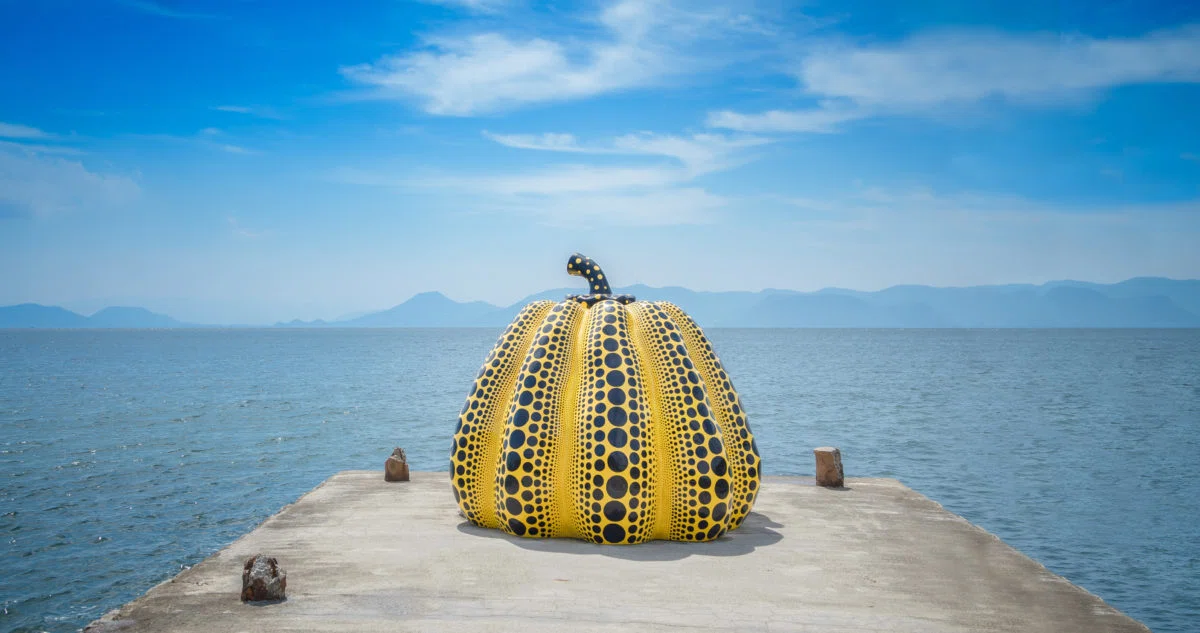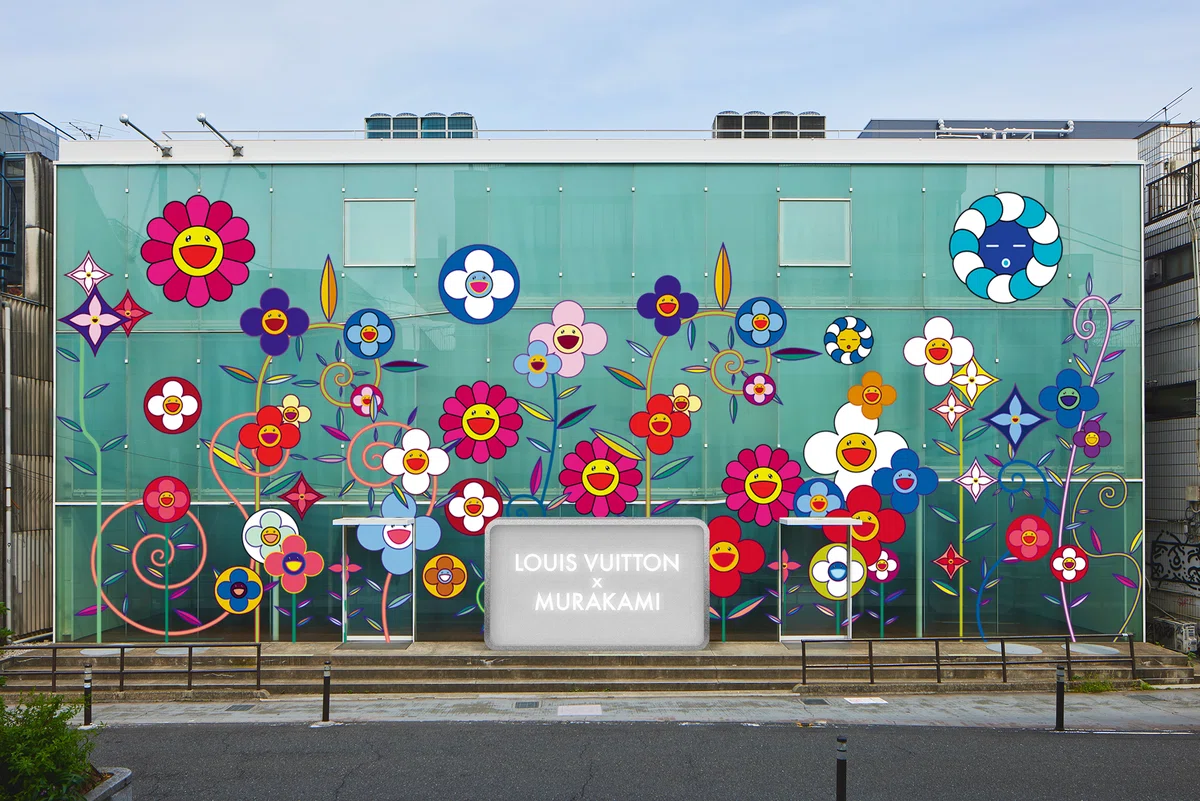Art Market Where Value Matures
What Japan’s art scene teaches investors, brands, and international artists — from Murakami, Kusama, and Nara.

Art Market Where Value Matures
Japan is one of the rare places where art’s value doesn’t just spike; it matures. Even as the global economy sways, the country’s system — galleries with rigorous stewardship, bilingual catalogues and archives, corporate collections and long‑term loans, and a network of festivals and sites ranging from modernist halls to temples — keeps turning exhibitions into memory, memory into provenance, and provenance into price discovery. The loop is simple to describe and powerful in effect: show → record → lend → show again.

The World, in Context
Globally, the art market topped about $46.7 billion in 2021 and has remained active despite volatility. Over the past few years the supply of works priced above roughly $67,000 has thinned, producing a pattern of smaller aggregate values yet more transactions. Momentum has shifted to the middle and lower tiers — under approximately $13,000–$33,000 — where online platforms and private sales dominate.

Contemporary art also showed unusual resilience during the pandemic’s market whiplash. One U.S. art‑fund platform reports that contemporary works it has targeted since 1995 delivered average annual returns in the low‑teens, outpacing broad equity and real‑estate indices — though, as always, selection and methodology matter and headline numbers should be read with care. The quiet surge in private sales and the preference among institutions and the ultra‑wealthy for discretion reinforce the same theme: value has been consolidating out of view, piece by piece.
Japan’s Quiet Outperformance — and Why It Happens
While South Korea cooled and China fell to post‑2009 lows, Japan still posted a modest year‑on‑year gain (around +2%). The reason is structural. Artists pass through a ladder that starts with selection in art schools and juried shows and moves into representation by trusted galleries. Works are conserved properly; dates, dimensions, and materials are standardized; catalogues and monographs stack up into a usable public record.
Collectors — private and corporate — purchase and then lend long‑term, pushing works into fairs and auctions where pricing is transparent and continuous provenance becomes legible. That public trail is what international gallerists and curators actually follow into touring exhibitions, biennials, and museum acquisitions. Over time, exhibitions, publications, holdings, and prices cross‑validate one another until reputations stabilize and the path toward “blue‑chip” status opens.


This ladder is held together by a community of evaluation: curators and critics, museum friends and trustees, donors, corporate cultural teams, and leading collectors. They divide the work of staging, publishing, acquiring, and lending, weaving artists into society’s memory. Japan’s advantage is that the infrastructure to receive and amplify this community already exists.
Corporate displays and long‑term museum loans accumulate social provenance. Repeated bilingual catalogues keep feeding the secondary market with comparable data. And the sites themselves — temples, notable modern architecture, and island‑based or regionally embedded festivals — help determine where a work sits and how it ages, turning placement and time into part of an artist’s competitive edge abroad.

A newer factor is demographics. Japan’s collector base has visibly skewed younger. High‑profile buyers such as Tadashi Yanai and Yusaku Maezawa normalized art as a destination for entrepreneurial wealth, and a cohort of thirty‑ and forty‑something founders now buy actively on both the primary and secondary markets — often completing domestic‑to‑overseas purchases entirely online. In the trade you even hear a nickname for them: the “Maezawa children.”
A Calendar That Keeps the Engine Warm
Japan runs art as a year‑round practice rather than a seasonal burst. Tokyo Gendai pulls international galleries into the country; Aichi 2025 — titled A Time Between Ashes and Roses — runs September 13 to November 30, 2025; the Setouchi Triennale unfolds across three seasons in 2025 (Spring: Apr 18–May 25; Summer: Aug 1–Aug 31; Autumn: Oct 3–Nov 9); and the Okayama Art Summit brings contemporary work into dialogue with castle town and gardens.



Recent markers matter too: teamLab Borderless relaunched as a permanent venue at Azabudai Hills in February 2024, underlining how night‑time, photo‑friendly, roaming experiences can anchor revenue; and Takashi Murakami’s “Mononoke Kyoto” at the Kyoto City Kyocera Museum framed 2024 with a museum‑scale statement.
What Auctions Actually Show
Across long‑run data, Japanese artists repeatedly sit near the top. Yayoi Kusama, Takashi Murakami, and Yoshitomo Nara appear alongside Basquiat, Jeff Koons, and Damien Hirst when you rank contemporary artists by total auction sales.

Kusama’s Infinity Nets realized about $7.1 million in New York in 2014 and roughly $10.5 million in 2022, lifting the benchmark for the series. Takashi Murakami’s My Lonesome Cowboy hit $15.2 million in New York in 2008, with later anchors stabilizing in the $5–7 million range. Yoshitomo Nara’s Knife Behind Back fetched $24.9 million in Hong Kong in 2019, a leap from the $13,000–$33,000 territory where many of his small 1990s works once traded.
Price trajectories tell the same story at different scales. Ayako Rokkaku saw a 2000s untitled work move from around $3,300 to roughly $1.23 million by 2022 — an increase on the order of ×368. For Kusama, a 1990s Infinity Nets that once sold for about $133,000 later reached roughly $10.5 million. Murakami’s Cowboy climbed from about $33,000 to $15.2 million. Nara’s figure paintings rose from about $13,000 to $24.9 million. Different artists, same mechanism: legible motifs that stick in the mind, and careers that accumulate exhibitions, publications, and collection history — fuel for confidence in the secondary market.

How Japan Got Here: “Place” and “Sign”
Postwar Japanese art began by reinventing the exhibition space itself. In the 1950s, the Gutai Art Association turned paper, wood, light, and action into events — things nobody had seen inside a gallery. By the late 1960s, Mono‑ha stripped things down to relationships between materials and sites, training the eye to see material as material. Yoko Ono in New York wove audience action into the work; On Kawara began Today (Date Paintings) in 1966, stacking time as subject. That same year Yayoi Kusama staged Narcissus Garden guerrilla‑style in Venice, selling 1,500 mirrored spheres herself and drawing a clean line between work, action, and economy.
In the 1990s, Takashi Murakami named Superflat, translating manga, anime, and advertising into a contemporary art grammar. His 2000s collaboration with Louis Vuitton made visible how art’s signs could plug into industrial and brand circuits. From the 2010s onward, region‑based festivals such as the Setouchi Triennale and the Yokohama Triennale turned viewing into a circuit of stay, travel, and dining. And today, venues like teamLab Borderless show how architecture and landscape (“place”) plus visual language (“sign”) expand art into lived experience that people photograph, share, and revisit.


So What — Where to Place Your Next Move
Japan’s market rewards not only what you acquire or present but where and how you set it down.
For Investors
The rational play is to look just off the shoulders of the big three — Kusama, Murakami, Nara — for works not yet captured by global indices, and then to pair acquisition with public‑facing venues. Long‑term loans into corporate displays or museums, followed by appearances at Setouchi or the Okayama Art Summit, will thicken provenance and keep the price‑discovery loop turning.
For Brands
The lesson is placement that makes memory form at first sight. Think of how a luxury runway at Tō‑ji instantly binds art, architecture, and city. Treat collaborations as place‑making and archive‑making rather than single‑use campaigns: publish in Japanese and English, design for photographic afterlife, and allow installations to persist beyond the launch so that the audience, not just the press, completes the work.
For International Artists
Japan is compelling precisely because it offers layers of presentation from day one. It is possible to structure a debut that moves from a gallery show to a corporate loan to a regional festival to a publication, each step adding a strand to the public record. Approach the country less as a sale venue and more as soil. In that mindset, short‑term buzz converts into a long‑term asset.
Why Now
With other Asian markets hesitating, Japan continues to grow — even if only modestly. The collector base has renewed itself. Sponsorship slots for festivals and cultural programs are being claimed earlier. In practical terms, volatility is contained and the stages are set. This is a good moment for the next generation — and for new entrants from abroad — to step into the light and let the loop work.
What’s Next
In a follow‑up, we’ll look closely at emerging artists who already write with bilingual catalogues and think in terms of placements, and at the on‑site mechanics of festivals that turn viewership into provenance. The aim is simple: a map of how Japan’s market will grow tomorrow’s stars and surface new currents.
Considering Japan for your next art move?
Talk directly with NextGens about collection strategy, brand collaborations, or structuring a Japan debut for your artists.
💬 Chat on WhatsApp